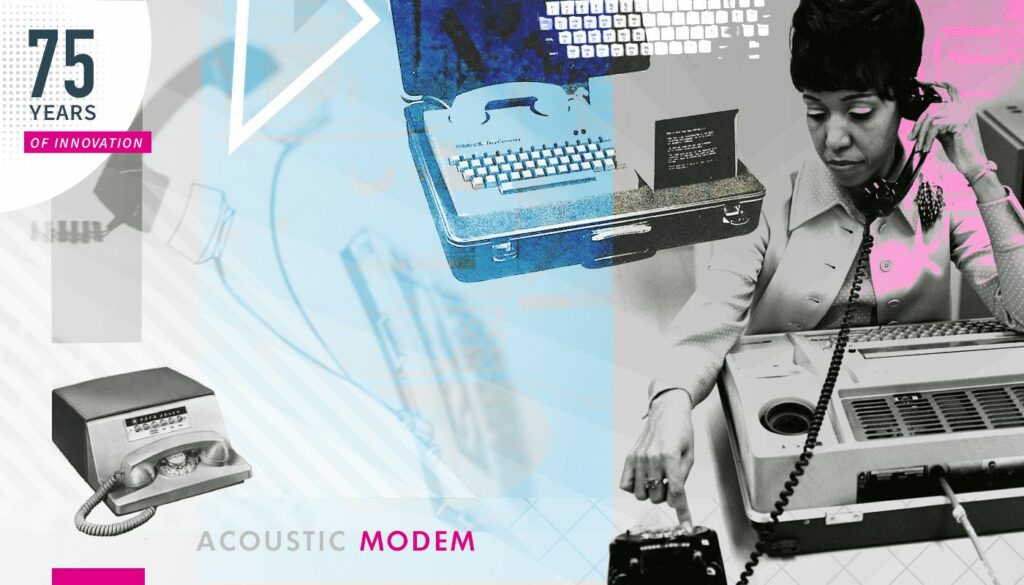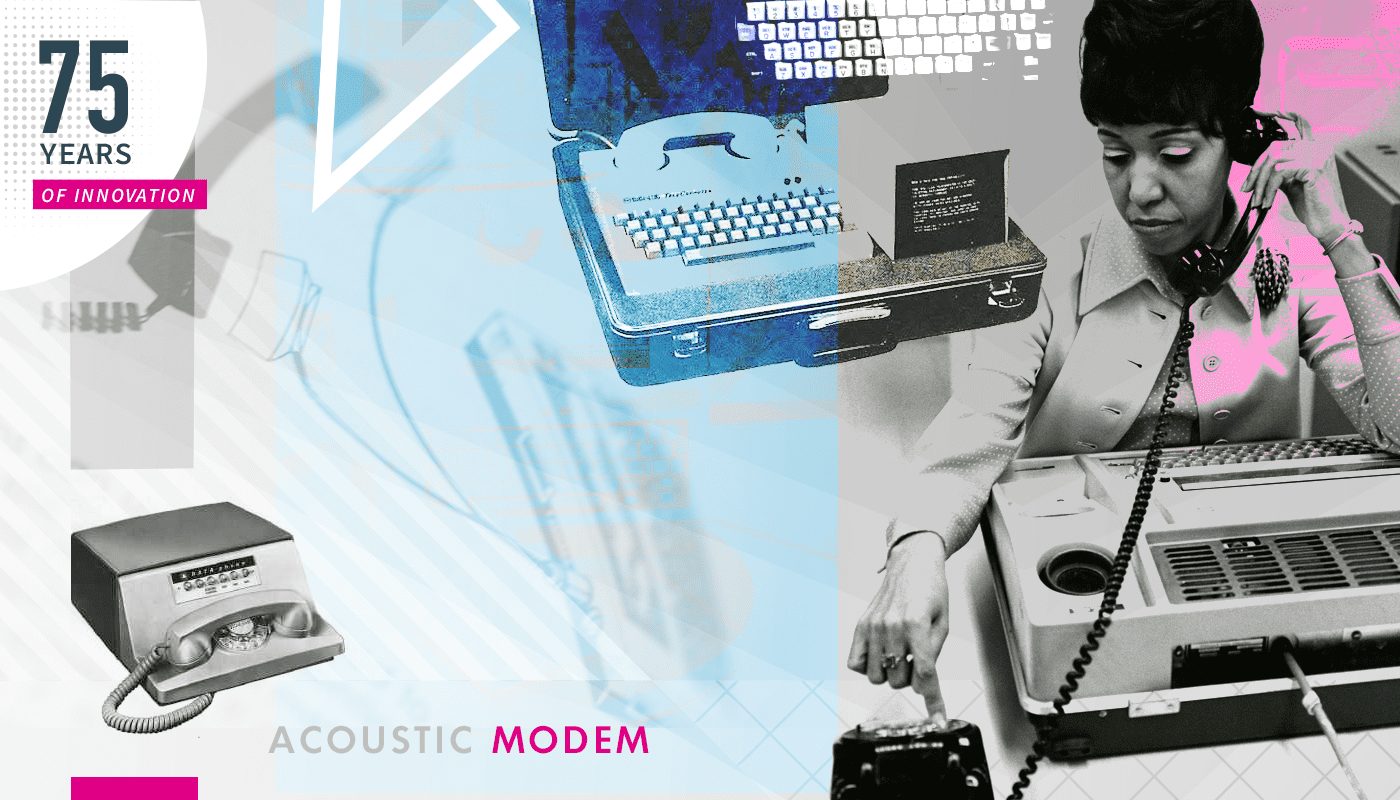The 75 Years of Innovation series highlights the groundbreaking innovations spanning from SRI’s founding in 1946 to today. Each week, SRI will release an innovation, leading up to its 75th anniversary in November 2021.

Commercialization of acoustic modems to allow mass adoption
The stirring sound of the modulator/ demodulator: SRI International and the commercialization of the acoustic modem
Combine the first few letters of the words “modulator” and “demodulator,” and you get “modem.” Modems are as much a part of modern life as the telephone that gave birth to them and are an essential part of the “kit of the internet,” opening the door to connectivity by acting as a data translator.
SRI International often transforms existing technologies, making them commercially viable. This was the case with the acoustic modem, with SRI stepping in to allow the modem to move into a new era in its long history.
A battle for the phone lines and the FCC Carterfone decision
Before 1968, all U.S. phones were held on a lease basis, usually through AT&T. This meant that customers did not own the phones they had in their homes, and using a phone outside of specific prescribed uses was prohibited. In 1968, the Federal Communications Commission (FCC) made a decision that effectively removed the monopoly that AT&T had on phone use and would allow phone lines to be used in new and potentially innovative ways. This became known as the Carterfone decision, named after the inventor who filed the petition.
Previously, individuals were prohibited from connecting phones to other devices, which stifled phone-based innovation. This decision had far-reaching positive implications that led to the openness of the internet that we enjoy today. It also allowed SRI to develop and advance an acoustic modem; one that translated data to sound and back again, allowing for data transfer over analog telephone lines. Before the Carterfone decision, anything connected to a phone line was prohibited by law as “attaching a foreign device.” When the FCC opened the telephone to experimentation, SRI began to develop and refine the acoustic modem.
John Van Geen, at that time a scientist at the Stanford Research Institute (now SRI International), began working on a device designed to allow a modem to work at a faster rate when used with an 8-bit ASCII terminal. The device was an acoustic coupler that placed a microphone and a speaker inside a modem box to then pick up and transmit signaling tones. Van Geen developed specialized circuitry to convert audio-encoded binary signals.
Van Geen’s improvements allowed receivers to detect bits of data amid the background noise heard over long-distance telephone connections. At that time, the typical transmission rates reached were 300 bits/second or baud. To put this into context, a 300 baud modem would take over 7 hours to download a 1 MB file. At the time, however, this was enough to do many tasks, and these transmission rates were more than adequate for the typewriter-based terminals of the day.
The great thing about Van Geen’s acoustic coupler was that it could use the standard telephone handset of the time. This mix of innovation in design and commercial viability made for a successful technology marriage.
What is an acoustic coupler modem?
An acoustic coupler connects a modem to a telephone line to transmit data from one computer to another. The acoustic coupler that Van Geen developed used an ordinary handset placed in a cradle containing a speaker and a microphone. The Van Geen acoustic coupler emitted and received tones from a modem, converting binary data to an acoustic signal that traveled over the phone line to the receiving acoustic coupler, which reversed the process, converting the audio signal back into binary data. The improvements made by Van Geen improved the quality of the connection, ensuring that the receiver could detect bits of data amid the hiss heard over long-distance telephone connections.
Deafnet was an earlier, related innovation from SRI International. Deaf physicist Robert H. Weitbrecht invented an acoustic coupler that was inserted between the teletypewriter (TTY) and a telephone handset. This acoustic coupler was an inspiration for further designs, and in 1966, SRI patented two acoustical couplers that gave the deaf a new way to communicate over the telephone.
SRI and Van Geen’s work built upon these earlier acoustic coupler designs to create a more robust and commercially viable modem. This work also helped develop broad-area computer network connections, more commonly known as wide-area or local-area networks (WAN and LAN).
From acoustic couplers to today’s blazing broadband
One might say that the acoustic modem was the grandmother of internet invention. SRI’s and Van Geen’s invention would have been stifled if it was not for the FCC’s ground-breaking decision to open up the telephone system. By removing these impediments to creativity, the FCC opened the door for SRI International to step forward and innovate. Once the pathway was free of such impediments, the acoustic modem began its journey to the superfast broadband of today.
Resources
FCC, Carterfone decision, 1968: https://myweb.uiowa.edu/johnson/FCCOps/1968/13F2-420.html
SRI International, The Dish, Deafnet: https://medium.com/dish/75-years-of-innovation-deafnet-32715ef43842



